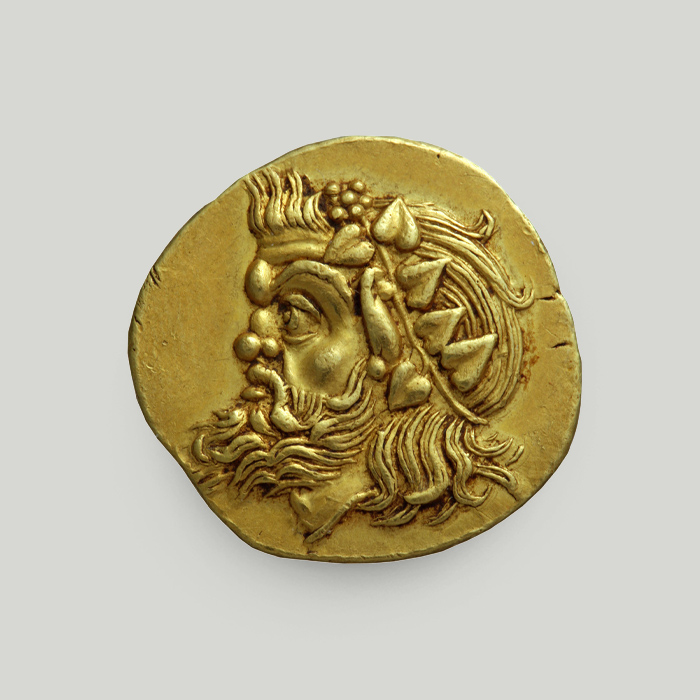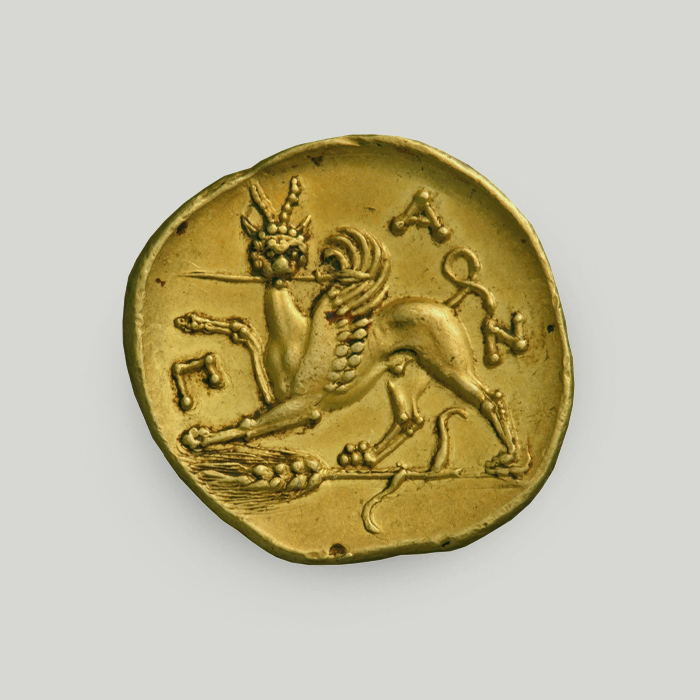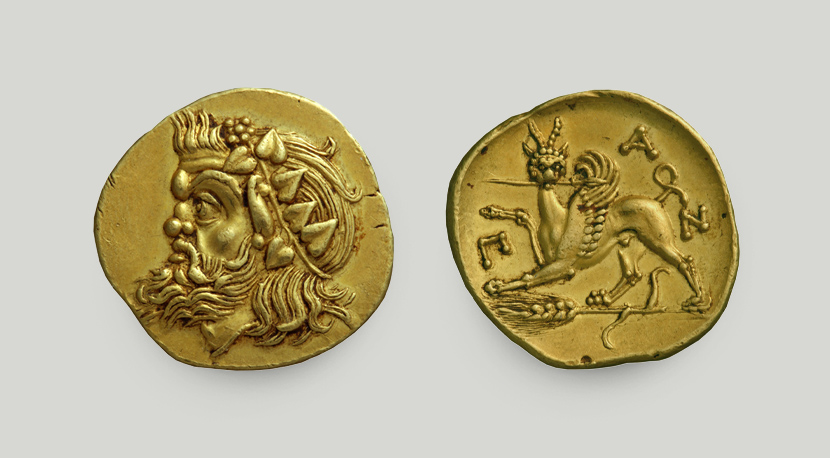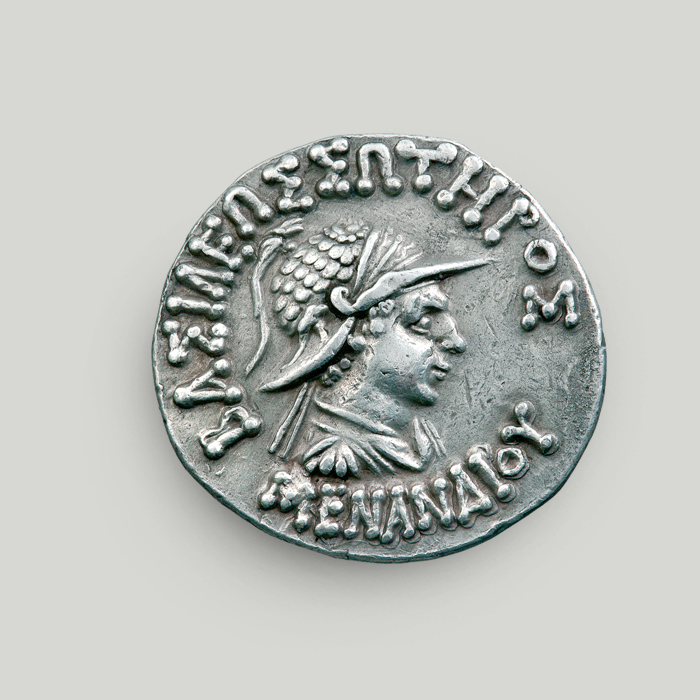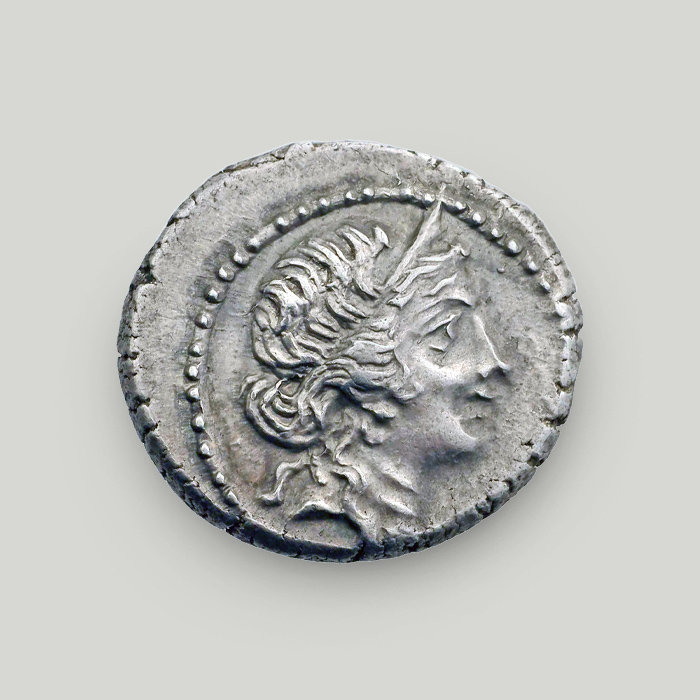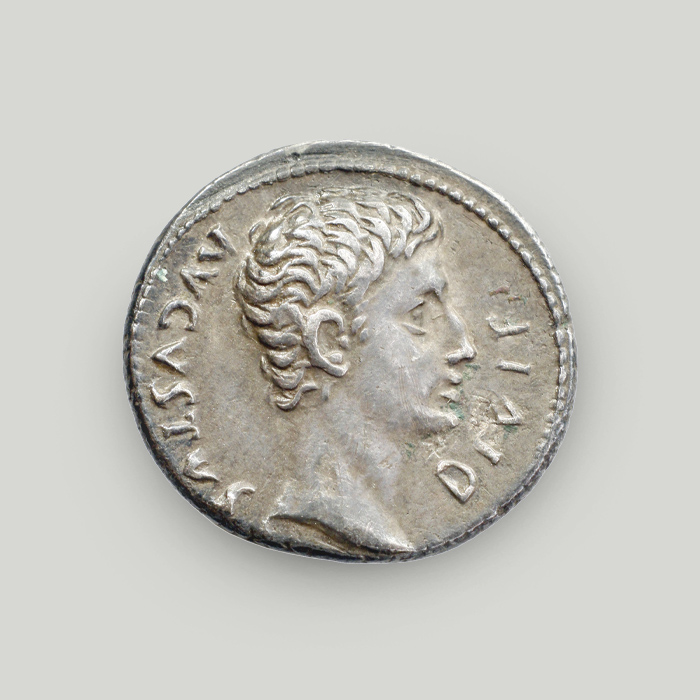Gold stater, Panticapaeum
Panticapaeum (present-day Kerch, Ukraine) is home to the most impressive depiction of Pan, the hideous-looking god inspiring panic on sight. The word “panic” is actually derived from his name. The combination of Pan with the griffin, a traditional guardian of gold, in the type of the Panticapaeum stater may be associated with the protection of goldmines in the area.
Obverse
Head of Pan in profile facing left, crowned with ivy wreath.
Reverse
Griffin walking on wheat stalk, holding a spear in its mouth. The legend around the type reads ΠΑΝ (Pan).
The fish path
The ruins of the Ancient Greek settlement at Panticapaeum lie in the land around the strait at present-day Kerch, Ukraine. Situated at the north-eastern tip of the Crimean Peninsula, the strait connects the Sea of Azov and the Black Sea. In antiquity, it was known as the Cimmerian Bosporus.
Fish have always abounded there, and the area was famous for it. So much so that it was actually named after it. In Scythian, the words panti and kapa combined meant “fish path”.
The ancient colony is believed to have been established in the early 6th century BCE. It was the oldest Greek colony on the shores of Cimmerian Bosporus. The colonists descended from the inhabitants of Miletus in Asia Minor. However, it cannot be excluded that Greeks from the wider area of the eastern Greek islands and the cities along the western coast of Asia Minor also participated in the colonisation.
The coinage of Panticapaeum
Minting started at Panticapaeum around the early 5th century BCE. However, the true masterpieces of this mint are the gold issues dating to the 4th century BCE.
The horned god Pan
Pan is the hideous-looking god that inspires panic to anyone who should lay eyes on him. The word “panic” is actually derived from his name.
He was born to the god Hermes and an Arcadian nymph. Since birth, he had the legs of a goat, a beard, pointy ears, horns on his head, and a shockingly hairy body. Upon seeing his repulsive appearance, his own mother fled in horror.
Hermes felt sorry for him and led him to Mt. Olympus. The gods burst out in laughter the moment they saw him. As god of merriment, Dionysus immediately took him in as part of his entourage.
The worship of Pan was quite popular and started in his birthplace of Arcadia. He is considered the patron and protector of King Antigonus Gonatas of Macedon. Legend has it that, during the battle of Lysimacheia, Thrace, in 277 BCE, Pan made an appearance and caused mayhem among the opposing Gauls, granting Antigonus the victory.
Guardians of gold
The combination of Pan with the griffin, a traditional guardian of gold, in the type of the stater may be associated with the protection of goldmines in the area.
Pan personifies the terror that makes people flee in panic.
Griffins were mythical creatures with the body of a lion and the head and wings of an eagle. As chthonic entities, they belong to the underworld; they are associated with gold mining and considered guardians of gold and silver mines.
The griffin depicted on the reverse of the coin brings to mind Herodotus’ mention of the “gold-guarding griffins” of the north. The wheat stalk on which the griffin walks is a reference to the area’s abundant crops of grain.
Staters in antiquity
The word “stater” corresponds to an ancient coin denomination. Etymologically, it is derived from the Phoenician schequel, which denoted a coin weighed to comply with a specific standard.
The weight of a stater varied significantly by region, and according to the weight standard applied by the mint.
The Alpha Bank Numismatic Collection is not open to the public.
Research visits to the Numismatic Collection can be organised upon request.
Contact us to book your visit.
